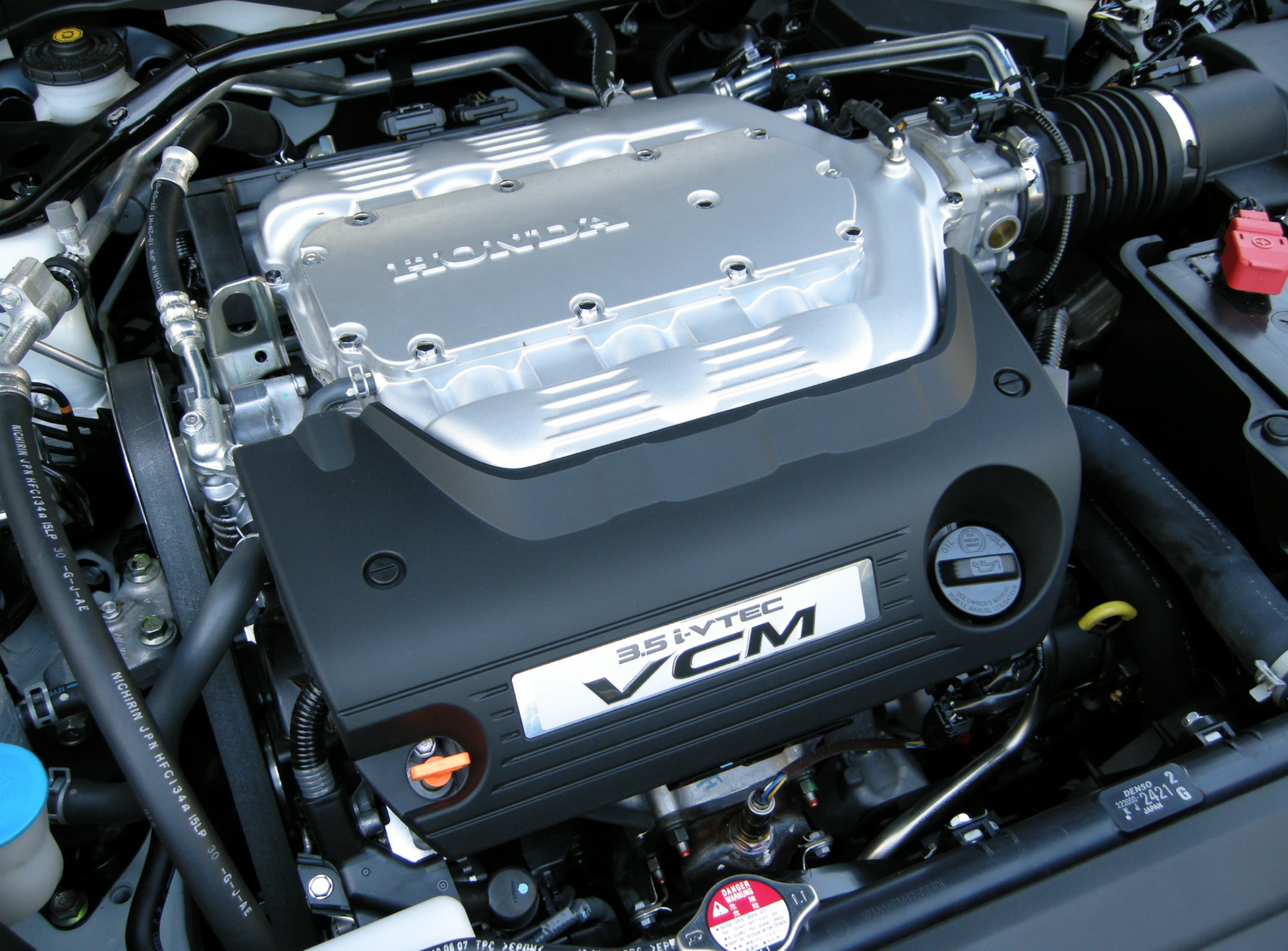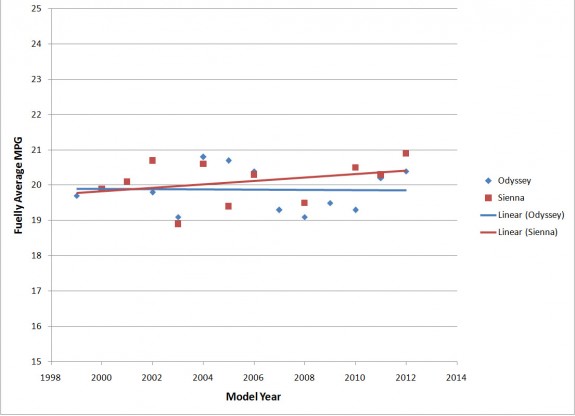Stupid Technology: Variable Cylinder Management (VCM)

Continuing our Stupid Technology series, aiming to help consumers wade through the long list of tech options on new cars, we will examine Variable Cylinder Management (“VCM”) from Honda. This technology helps save fuel by turning off certain cylinders under light load conditions. To judge VCM’s success, I would use three criteria: 1) has it been widely adopted?, 2) does it achieve its goal?, and 3) does it do #2 without any major adverse side effects? Honda’s VCM system manages to fail on all three counts. Read on to find out why!
Has VCM been widely adopted?
The answer is no. In the years that have passed since VCM was introduced in the 2005 Honda Odyssey, it has been mostly left to flounder only in a few Honda and Acura vehicles. The technology has been tried before in various forms, by American, European, and Japanese automakers. Similar technologies are still in use by GM and Chrysler, but critically, image-conscious Toyota has not picked up the technology in any of its vehicles, hybrids or otherwise. That’s odd, since the RX450h and Highlander Hybrid could benefit from this technology if it was truly a great benefit to highway fuel economy.
Does VCM achieve better fuel economy?
Timely widespread adoption of new technology is a good indicator of its usefulness, but it is not a bulletproof metric. Thus, it is good to examine also whether VCM actually does what it says: improve fuel economy by shutting down certain cylinders. It is a little hard to quantify the effects of VCM; I’ve only seen one owner disable it, and they report no change in fuel economy. It is possible to compare EPA ratings: Honda rates the 2010 Odyssey without VCM at 16/23MPG, while the VCM models are up to 17/25. However, those ratings are usually tested and given by the manufacturer, and very few of the figures are verified by the EPA itself.
A better test is to look at the Odyssey’s fuel mileage in comparison to Toyota Sienna. They are both 8 passenger, FWD minivans. The dimensions of the two are within spitting distance of each other, and both use a 3.5L V6, with only the Honda engine having VCM. The Odyssey gets ratings of 18/27, while the Sienna only musters 18/25. Clear win, right? Not so fast! First, remember that EPA tests tend to be at lower speed and lower load than real life conditions, thus giving the Odyssey a bigger advantage. In real life, higher speeds would reduce or completely erase VCM’s advantage. Also consider that the Sienna is more powerful: 266HP vs. 248. Finally, consider that the Odyssey and Sienna both get similar averages on Fuelly.com, which takes data from real owners of these two vehicles. The results seem inconclusive (at best) about a highly-touted technology. Even if VCM gives a real 2MPG advantage, a 25MPG van, which I’ve proved can actually do 26MPG without trying, still isn’t bad.

This graph uses Fuelly average MPG data for Honda Odyssey and Toyota Sienna vans. Some model years are excluded due to erroneous data (ie. vans achieving 106MPG averages). The graph shows that the Odyssey (which had VCM introduced starting in 2005) has no clear fuel economy advantages over the Sienna.
Does VCM have any adverse effects?
VCM hasn’t been around long enough (by my standards) to answer this conclusively, but the evidence is casting a grim outlook for VCM. At the very least, it has resulted in many engine mounts needing to be replaced. Several Accord V6 and Odyssey VCM engines have had oil consumption, rough running, and check engine lights. In one case, it was found that cylinder #3 had an oil-fouled spark plug. Coincidentally, VCM always affects cylinder #3 when it turns on. Also, this particular vehicle had higher than average mileage, considering the vehicle age – an indication that it was driven on the highway where VCM would be quite active. Some concluded that the culprit was obvious.
Then, recently, one of the old regulars from DriveAccord gave me some more insight. Her husband is one of the top Honda technicians in the country, and has been a Honda factory trained technician since 1981. Last week at a dealer in Texas, he replaced three Honda V6′s with VCM due to oil starvation. Apparently, when VCM engaged in these vehicles, the engines became starved of oil and tore themselves up. This could be related to the oil consumption issue in the above paragraph, or it could be a completely new issue. Either way, with VCM saving only small amounts of fuel (if any at all), but causing thousands in potential damage, it doesn’t seem very worth it.
Verdict: VCM is a stupid technology, save your money (if you can)!


